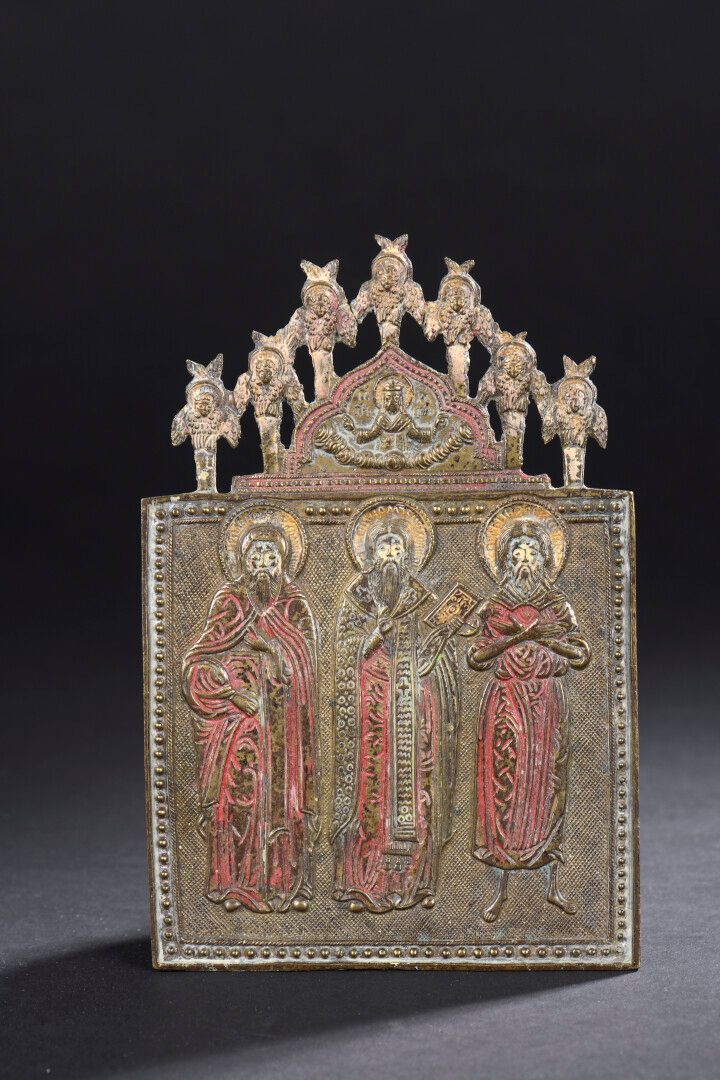Description
RUSSIA, 17th-18th century Icon of an old believer representing the Three Hierarchs Gilt bronze with polychrome enamel. H. 17 L. 11,5 cm
88
RUSSIA, 17th-18th century Icon of an old believer representing the Three Hierarchs Gilt bronze with polychrome enamel. H. 17 L. 11,5 cm
You may also like
